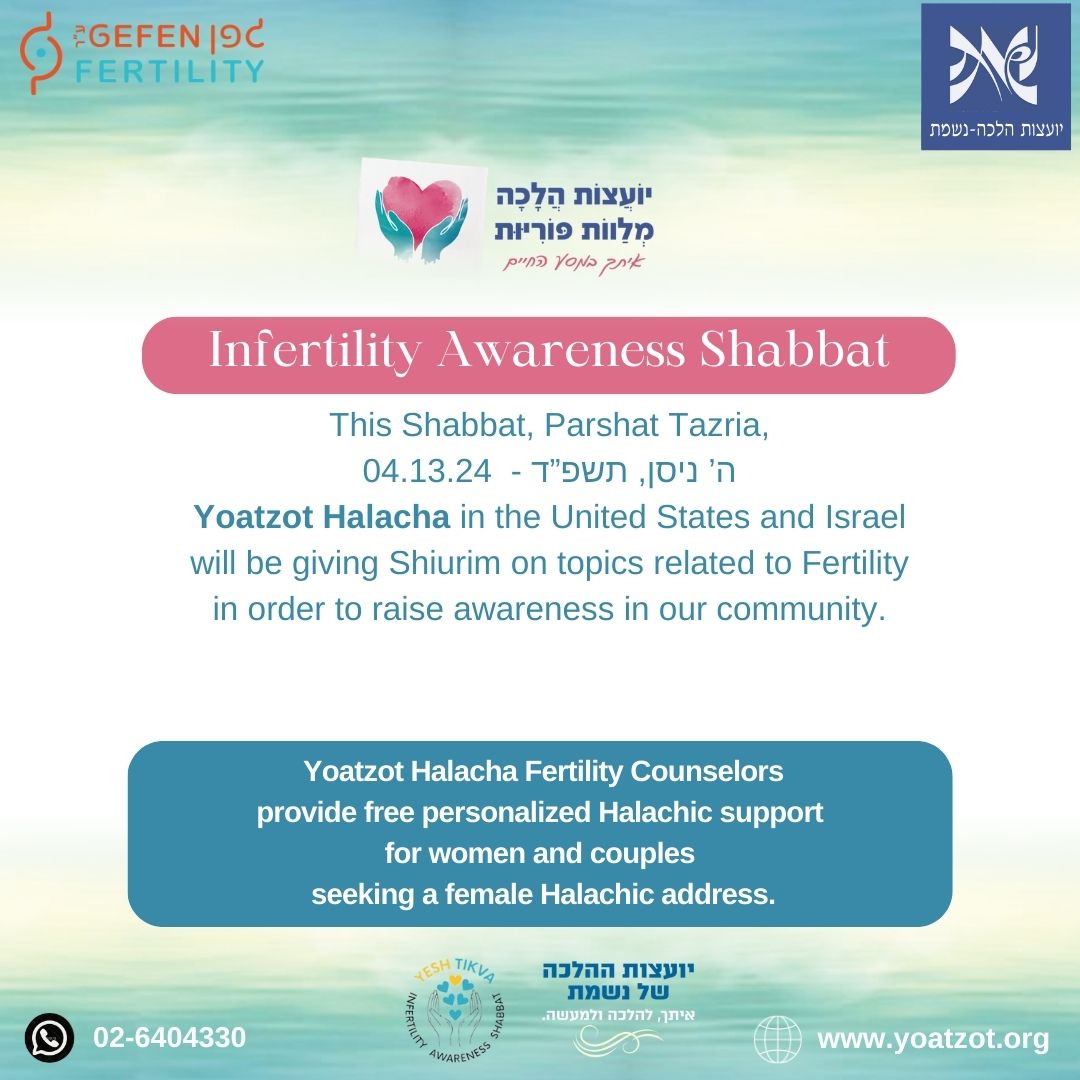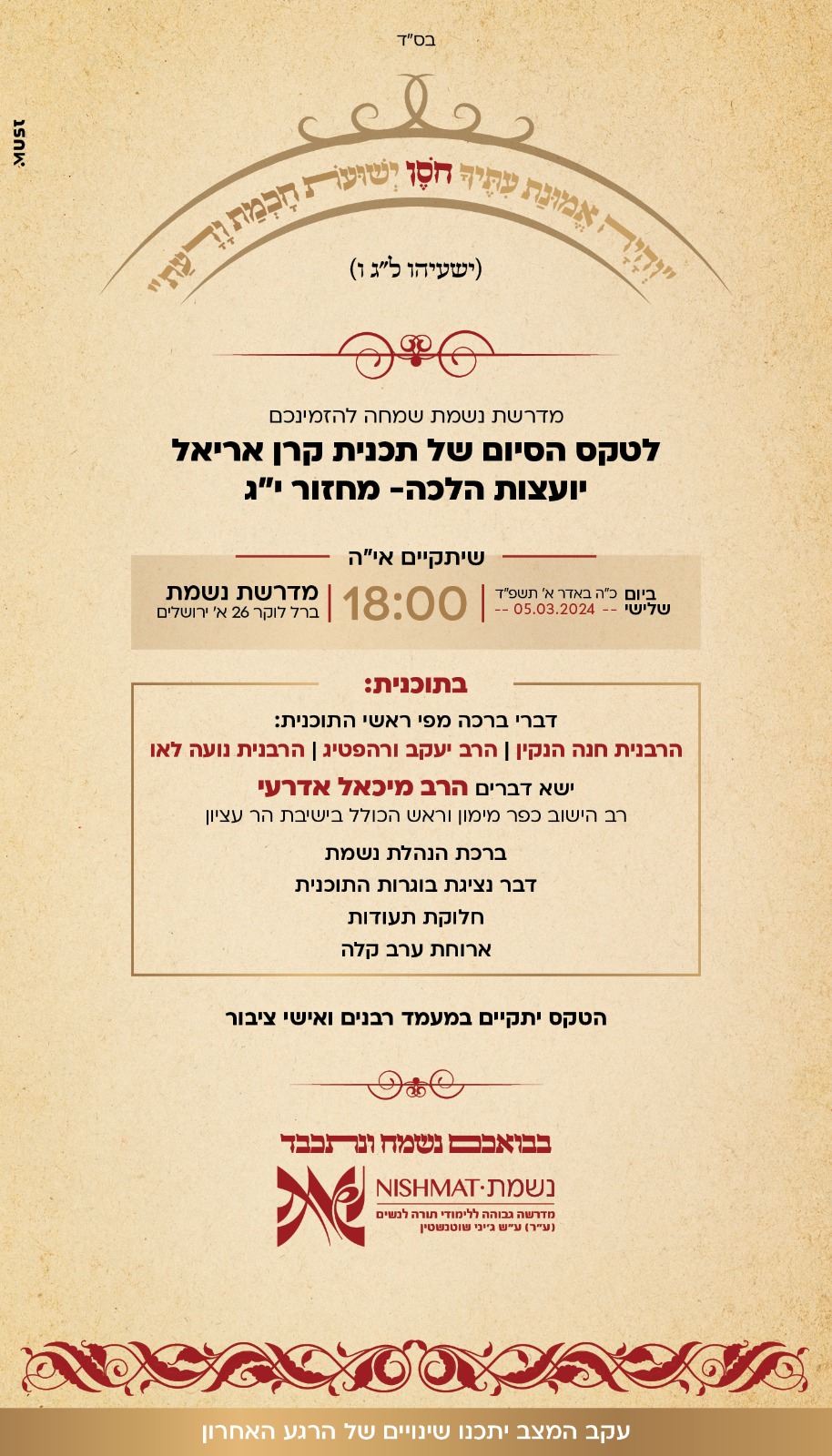Onot Perishah During Pregnancy
A pregnant woman, or meuberet, is halachically considered to be mesuleket damim (free of bleeding). Therefore, she is not required to observe onot perishah (periods of separation) in anticipation of her menses, unless she actually bleeds during pregnancy.
Most authorities do not consider a pregnant woman (meuberet) to be mesuleket damim until 90 days have passed from the date of mikveh use.There is an opinion that she attains this status even earlier, from the time of a positive pregnancy test. Unless a woman has a completely regular cycle (veset kavua), there is little practical difference between the two opinions – after she misses her first period, she has no date from which to calculate the haflagah (interval) or yom hachodesh (day of the month). If, however, she has a veset kavua, then she should consult with her rabbi.
Once she attains the status of mesuleket damim, a meuberet does not establish a completely regular cycle (veset kavua) even if she menstruates according to a consistent pattern. If she had established a veset kavua before becoming pregnant, it is suspended during pregnancy and breastfeeding, and is automatically reinstated only after the first menstruation to occur after 24 months postpartum.
Vaginal Bleeding during Pregnancy
Even though a missed menstrual period is generally the first sign that a woman is pregnant, uterine bleeding can occur during pregnancy. As the causes for this range from trivial to serious, a pregnant woman should notify her health care provider of any vaginal bleeding.
If a woman experiences uterine bleeding at any point in her pregnancy, or if she finds a stain which meets certain conditions (see Ketamim), she becomes niddah. She should always mention that she is pregnant when asking a halachic question about a stain, because her possible halachic status as mesuleket damim (free of bleeding) may be important in determining whether the stain renders her niddah.
Vesatot are calculated only based on a blood flow comparable to a period, but not from staining. A pregnant woman who has a blood flow should observe the yom hachodesh (day of the month), which falls one Hebrew month from the day she began bleeding. If she has a blood flow again, she should also observe the haflagah (interval). She does not observe onah beinonit (the thirtieth day).














